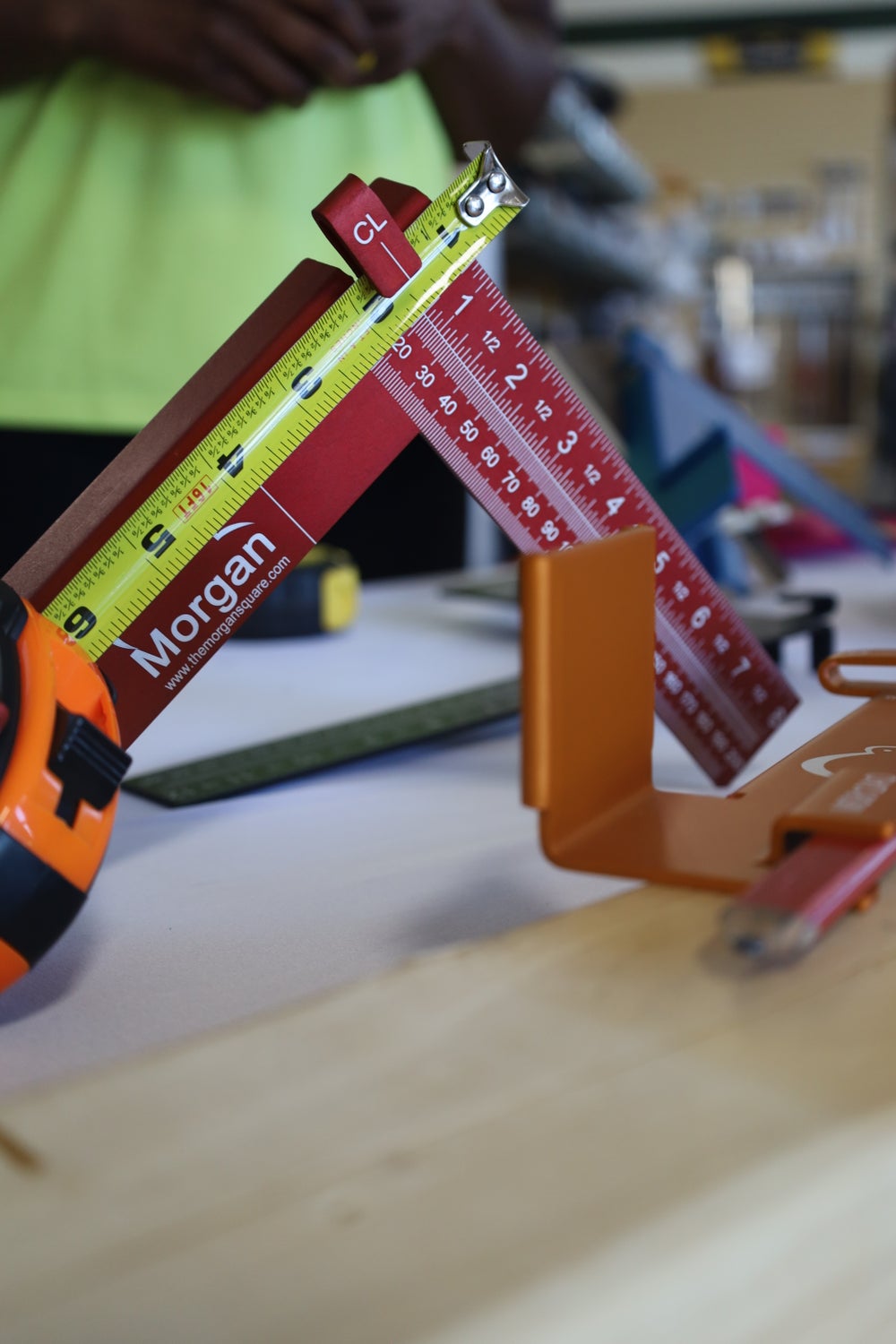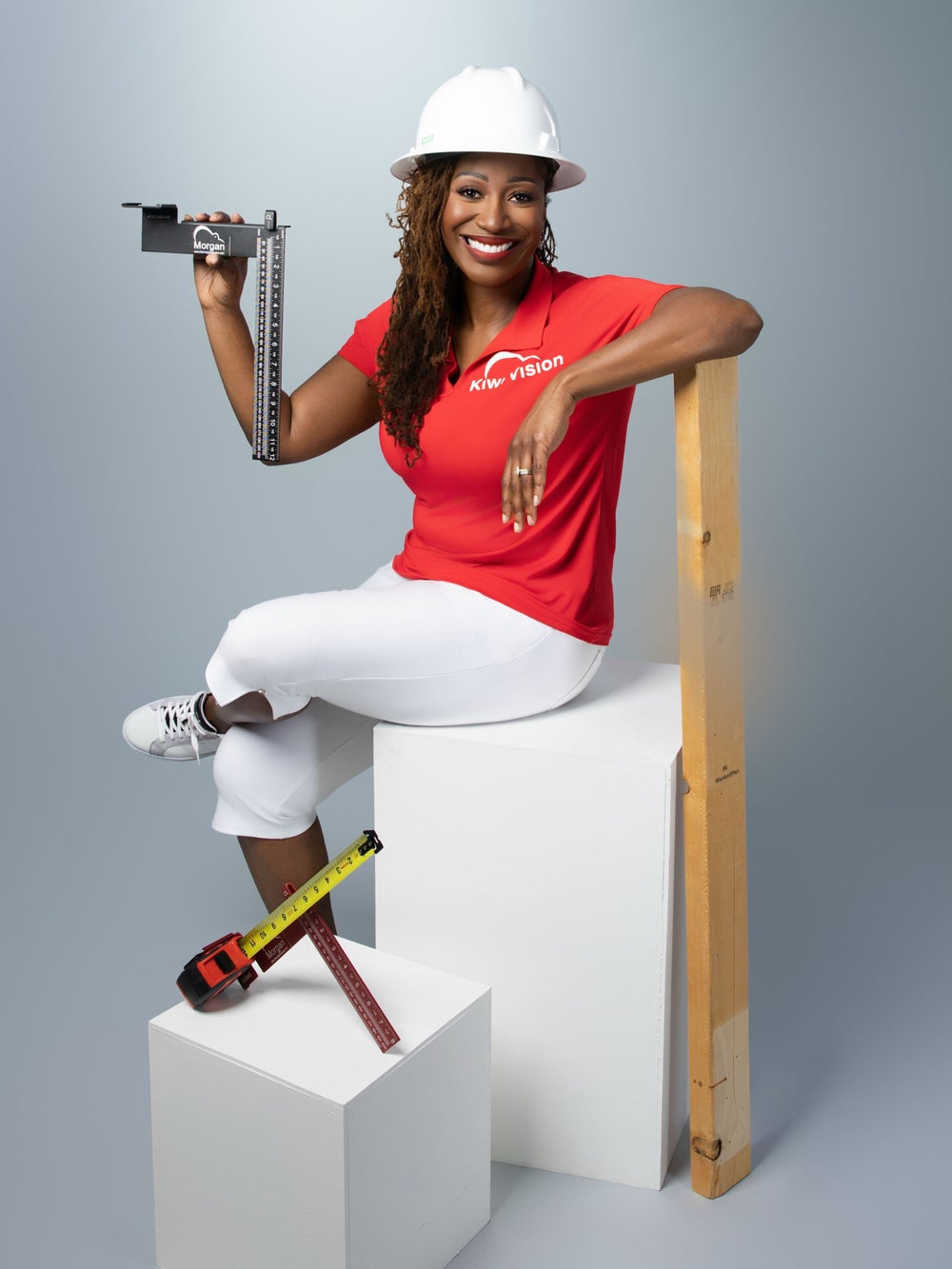Key Takeaways
- Kennedy works as a banker and sells her woodworking tool, the Morgan Square, on the side.
- Here’s how the California-based entrepreneur grew her business and landed the product in major retailers.
This Side Hustle Spotlight Q&A features Channon Kennedy, 47, of Hayward, California. Kennedy works as a banker; she started her company, Kiwi Vision, which sells a “first-of-its-kind” measuring and marking tool, the Morgan Square, as a side hustle — and continues to run it as one today. Responses have been edited for length and clarity.
Image Credit: Courtesy of Kiwi Vision. Channon Kennedy.
Want to read more stories like this? Subscribe to Money Makers, our free newsletter packed with creative side hustle ideas and successful strategies. Sign up here.
What was your day job or primary occupation when you started your side hustle?
I still have a day job. I work as a banker for Silicon Valley Bank, focused on startup founders, primarily engaging with early-stage entrepreneurs and pre-seed companies and helping them navigate their journeys.
What inspired you to start your side hustle?
The inspiration for the Morgan Square came from a deeply personal story. At just two years old, Morgan Dean Hebberd, a spirited boy from New Zealand, was diagnosed with leukemia. After a six-year battle marked by courage and resilience, Morgan passed away at the age of eight. In his final months, his father, Gary — who is a close friend of mine — took time off work to be with him, cherishing every moment.
Not long after, Gary, a craftsman, shared with me a heartfelt wish: He wished he’d had a tool that could have helped him work faster, so he could have spent even more time with his son. That conversation stayed with me. It became the seed that grew into the Morgan Square — a tool designed to make woodworking more efficient.
Related: This Mom’s ‘Scrappy’ Side Hustle Started in Her Garage — Now It Makes $5 Million a Year
What were some of the first steps you took to get your side hustle off the ground? How much money/investment did it take to launch?
The first steps were patent and trademark searches, finding a manufacturer and creating prototypes. I had to establish an LLC, secure insurance and handle all the foundational legal work. Prototyping alone was costly, so when someone wrote me a $50,000 check to support the vision, that gave me the initial runway. Beyond that, I’ve bootstrapped everything.
Are there any free or paid resources that have been especially helpful for you in starting and running this business?
Yes, two in particular. First, SCORE.org, which connects entrepreneurs with retired business leaders for free mentoring. My mentor has been invaluable in helping me navigate everything from financials to patents. Second, the Black Chamber of Commerce, which provided resources on funding, introductions and exposure in the community. Those two resources, along with the business knowledge I gained as a banker, have been critical.

Image Credit: Courtesy of Kiwi Vision
If you could go back in your business journey and change one process or approach, what would it be, and how do you wish you’d done it differently?
I wish I had invested in the right PR and marketing support earlier. I wasted a lot of time and money teaching myself Amazon ads and running into unreliable people who overpromised and disappeared with payments. Better vetting and earlier professional help would have saved me both money and stress.
When it comes to this specific business, what is something you’ve found particularly challenging and/or surprising that people who get into this type of work should be prepared for, but likely aren’t?
How expensive prototyping is, and how many iterations it takes before you get it right. You can’t expect the first or second version to be perfect. It’s a slow process, and you need patience and a financial runway.
Can you recall a specific instance when something went very wrong? How did you fix it?
At my first major trade show, the International Woodworking Fair in 2022, my website wasn’t set up properly, and I wasn’t thoroughly educated on POS functionality. In the middle of making sales, the system flagged my transactions and stopped me from accepting payments. I had to pivot on the spot, pulling out Excel spreadsheets and my Square reader to manually take orders. It was chaotic, but we still sold out and shipped everything once we got back home.
How long did it take you to see consistent monthly revenue? How much did the side hustle earn?
During our first year, amid the pandemic, we generated less than $1,000 initially but closed the year with $5,000 in total revenue. By our second year, that figure grew significantly to more than $60,000, even without a formal marketing strategy in place. Not bad for a niche product and a young brand still establishing its presence and credibility.
Related: Sisters’ Savory Side Hustle Averages $7,000 a Month: ‘Reward We Didn’t Feel in a Corporate Job’
Consistency is still a challenge; it spikes whenever I’m at trade shows. Online, the product doesn’t always grab attention until people can actually hold it. That’s why I plan at least one or two shows per quarter moving forward. I launched the Morgan Square in March of 2020, just as the pandemic hit, and launched on Amazon in 2021. However, despite the challenge of most trade shows being cancelled during the initial years of operation, we sold an initial 50 units. As the economy normalized, we’ve seen a rapid transition and upward trajectory of sales. I grew to over 1,000 units sold in 2023 and over 3,000 units sold in 2024.

Image Credit: Courtesy of Kiwi Vision
What does growth and revenue look like now?
Thanks to consistent effort and persistence, we’re now seeing a steadier stream of income, averaging around $4,000 per month. With the Morgan Square now featured in several retail locations and across multiple online channels, stronger partnerships with our retail partners and a dedicated marketing team executing a cohesive strategy, we anticipate continued growth and increasingly consistent sales.
How much time do you spend working on your business on a daily, weekly or monthly basis?
I work on my business every single day — early mornings, evenings and weekends — on top of my day job. Some days are focused on shipping orders, others on certifications, accounting or outreach. It depends on the month and what deadlines or opportunities are in front of me. But there’s not a day that goes by that I don’t do something for the Morgan Square.
What do you enjoy most about running this business?
The joy of seeing an idea come to life — and that people actually want it. Every sale excites me. Packaging boxes feels like wrapping gifts, and I don’t get tired of it. It’s humbling and energizing to know that people value what I’ve built.
What is your best piece of specific, actionable business advice?
Be intentional. Write down your goals and act on them. In 2025, I made a list of where I wanted to show up and what I wanted to achieve, and I followed through. That intentionality is how I ended up at trade shows, in new stores and ultimately in Home Depot. Don’t just keep moving things to “tomorrow.” Take deliberate action.
Key Takeaways
- Kennedy works as a banker and sells her woodworking tool, the Morgan Square, on the side.
- Here’s how the California-based entrepreneur grew her business and landed the product in major retailers.
This Side Hustle Spotlight Q&A features Channon Kennedy, 47, of Hayward, California. Kennedy works as a banker; she started her company, Kiwi Vision, which sells a “first-of-its-kind” measuring and marking tool, the Morgan Square, as a side hustle — and continues to run it as one today. Responses have been edited for length and clarity.

Image Credit: Courtesy of Kiwi Vision. Channon Kennedy.
The rest of this article is locked.
Join Entrepreneur+ today for access.
